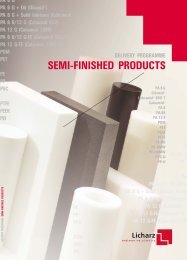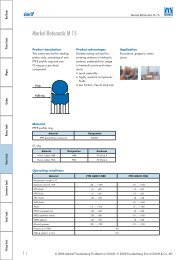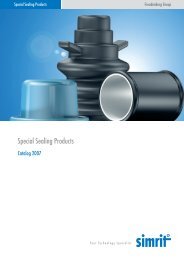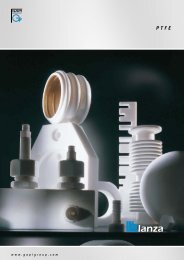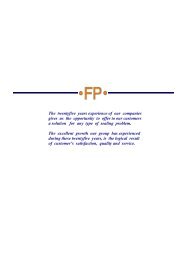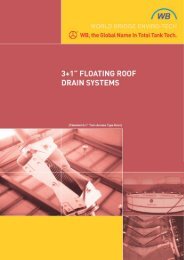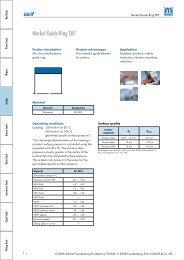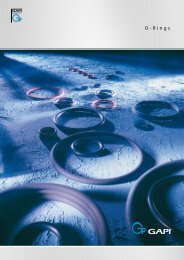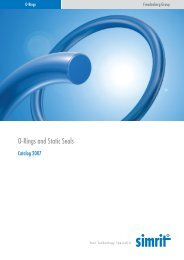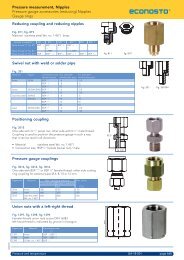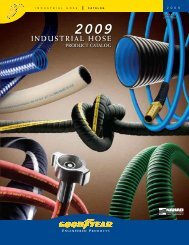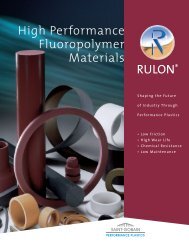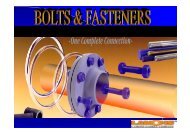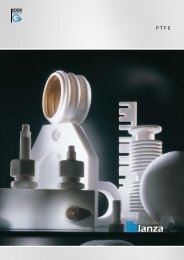Oleodinamica/Pneumatica Hydraulic/ Pneumatic
Oleodinamica/Pneumatica Hydraulic/ Pneumatic
Oleodinamica/Pneumatica Hydraulic/ Pneumatic
Create successful ePaper yourself
Turn your PDF publications into a flip-book with our unique Google optimized e-Paper software.
superficie di contatto con evidente beneficio per la<br />
durata della stessa.<br />
Per il poliuretano utilizzato da ARTIC SEALS sono<br />
consigliate le rugosità di lavorazione qui di seguito<br />
indicate in tabella III:<br />
Gioco di accoppiamento<br />
L’ampiezza massima consentita del gioco di<br />
accoppiamento tra testata/stelo e pistone /camicia<br />
deve essere attentamente valutata affinchè non<br />
intervengano problemi di estrusione nella parte<br />
posteriore della guarnizione. (vedi fig. 1 e 2)<br />
Tale gioco dipende principalmente dalla durezza<br />
del materiale con cui è costruita la tenuta, dalla<br />
pressione massima presente nel cilindro, dalla<br />
temperatura e dalla resistenza al carico radiale degli<br />
anelli di guida.<br />
Fig. 1<br />
Tab. II - rugosità superficiale / surface roughness<br />
superficie di scorrimento<br />
consigliata per il poliuretano<br />
sliding surface recommended<br />
for polyurethane<br />
superficie<br />
della cava<br />
static surface<br />
R max 1,00 - 4,00 < 10,0<br />
R z DIN 0,63 - 2,50 < 6,3<br />
R a 0,10 - 0,60 < 1,6<br />
G<br />
P<br />
sealing performance. Consequently, a be ter sealing<br />
performance implies a long lasting service life.<br />
Given the features of the polyurethane moulded<br />
by ARTIC SEALS the following roughness rates are<br />
recommended in the following table III:<br />
Coupling clearance<br />
The maximum width allowed for coupling clearance<br />
between head/rod and piston/bore must be carefully<br />
assessed to prevent any extrusion problems at the<br />
rear of the seal.<br />
(see fig. 1 and 2)<br />
Such clearance depends mainly on the hardness of<br />
the seal material, on the maximum pressure in the<br />
cylinder, on the temperature and on the radial load<br />
resistance of the wear rings.<br />
Fig. 2<br />
Tab. III - profili superficie/ surface profile<br />
Profili superficie<br />
surface profile<br />
profilo aperto<br />
open profile<br />
profilo chiuso<br />
closed profile<br />
P<br />
R a R z R MR<br />
0,25 1 15%<br />
0,25 1 70%<br />
G<br />
<strong>Hydraulic</strong>/ <strong>Pneumatic</strong> 13<br />
Sezione tecnica<br />
Technical overview



